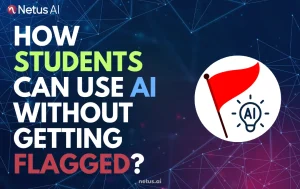
Why Students Are Getting Flagged Even When Writing Honestly | NetusAI
Learn how students can use AI tools for writing and research without getting flagged by AI detectors. Get tips on humanizing content and staying academically safe.

Content writer and editor for Netus.AI
Artificial Intelligence. In today’s digital age, technology plays a crucial role in enhancing efficiency and productivity. As businesses race against time, automation has become increasingly essential for staying competitive. Artificial intelligence (AI), the most cutting-edge technology, has emerged as a game-changer in automating tasks, leaving conventional methods like macros far behind.
Plagiarism detection is one area where AI has made significant strides. Its adoption in anti-plagiarism software has revolutionized online learning and the traditional classroom environment, ensuring authentic content production and academic integrity.
Artificial Intelligence (AI) is gaining immense popularity as it automates tasks that typically require human intelligence. Unlike traditional software, AI systems can learn tasks independently, without explicit programming.
One essential aspect of AI is machine learning, which teaches AI systems how to perform tasks by analyzing data. Three main types of machine learning algorithms are employed by developers:
With technological advancements, AI has evolved, leading to the development of generative AI and other sophisticated tools. GPT-3, a state-of-the-art language model, exemplifies the increasing capabilities of AI systems. We can expect AI to continue transforming various sectors, including plagiarism detection and multimodal systems that utilize images, sounds, and videos alongside text.
As AI pushes the boundaries of innovation, smaller language models and open-source advancements are projected to be significant trends in the coming years [(IBM Blog]. Alongside these developments, concerns related to GPU shortages, cloud costs, and data pipelines will need to be addressed.
In conclusion, AI is undeniably the next big thing in technology, poised to revolutionize various industries with its applications, algorithms, and predictive capabilities. As AI continues to grow, its influence and potential for innovation will only increase.
Plagiarism has become a growing concern for content creators worldwide. Traditional plagiarism detectors have difficulty identifying certain cheating tactics, such as using unrecognizable foreign characters or symbols. To address this issue, developers have begun integrating AI technology into their plagiarism scanners, resulting in more accurate and efficient detection.
AI-powered plagiarism checkers offer several benefits:
The implementation of AI in plagiarism detection not only enhances the authenticity and authorship verification but also contributes to maintaining academic integrity. Universities and educators can rely on these advanced tools to uphold honesty and prevent cheating in the world of higher education, ensuring a more level playing field.
Plagiarism checker tools powered by artificial intelligence offer numerous helpful features for checking content across different platforms. Here are some of the key features provided by these tools:
These tools continue to evolve and improve as researchers and computer scientists delve deeper into AI applications, predicting a significant role for artificial intelligence in the future of plagiarism detection. With their advanced features, plagiarism checker tools have become essential resources for content creators to ensure original and high-quality human and AI-generated writing.
AI plagiarism checkers learn from a vast amount of data, allowing them to recognize complex patterns and analyze large chunks of text. By comparing input text to numerous sources, AI tools can detect rephrased, synonymized, and altered content more accurately than traditional methods. This helps to improve the effectiveness of identifying copied content.
AI-powered plagiarism detectors provide several benefits over traditional methods:
Yes, AI-driven plagiarism checkers are designed to handle large volumes of text efficiently. They can quickly analyze lengthy documents, such as articles, research papers, or dissertations, with consistent accuracy and speed. This efficiency makes them a valuable tool for both students and professionals who require thorough plagiarism checking.
Premium AI plagiarism detection tools generally offer more features and higher accuracy than their free counterparts. While free tools can provide valuable insights, premium tools often deliver more comprehensive reports, access to broader databases, and additional customization options. The choice between free and premium tools depends on individual needs and budget constraints.
AI plagiarism checkers similar to Turnitin share several features that contribute to their efficiency:
AI can be utilized in various ways to strengthen academic integrity and reduce plagiarism:

Learn how students can use AI tools for writing and research without getting flagged by AI detectors. Get tips on humanizing content and staying academically safe.
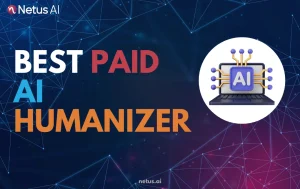
Explore the best paid AI humanizer tools that deliver high-quality, undetectable content. Compare pricing, features, and accuracy to choose the right solution for your needs.
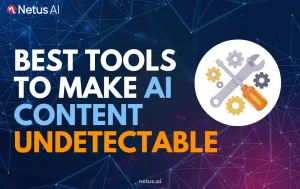
Looking for the best tools to make AI content undetectable? Explore top AI humanizers, bypass tools, and rewriting solutions to pass detectors and sound fully human.

Explore why AI content humanization is essential for SEO success. Learn how human-like rewrites can improve rankings, engagement, and trust with search engines.
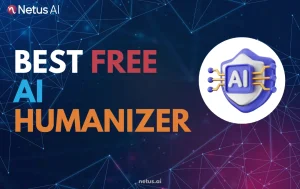
Discover the best free AI humanizer tools to make your content sound natural and bypass AI detection. Compare features, pros, and limitations of top free options.
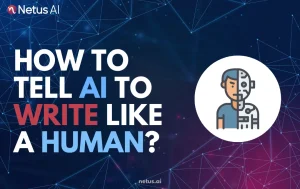
Learn how to prompt AI tools to write like a human. Discover techniques to improve tone, structure, and emotion in AI-generated content for better authenticity and SEO.
@ 2024 Netus AI.